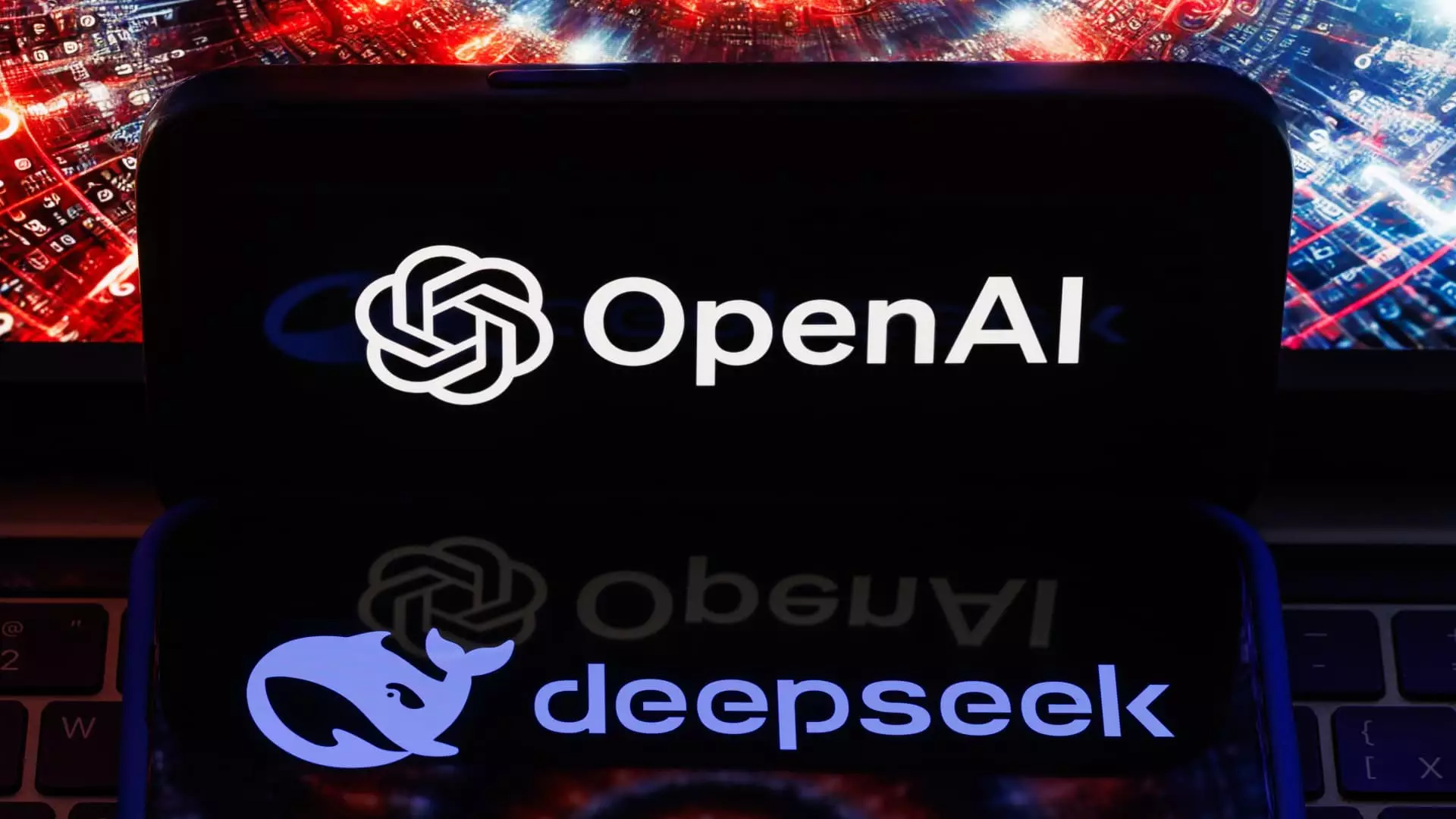In the rapidly evolving landscape of artificial intelligence (AI), the emergence of China’s DeepSeek has sparked intense discussions among global tech leaders about the shifting dynamics of U.S.-China competition. Recent revelations surrounding DeepSeek’s groundbreaking AI models — notably their R1 reasoning model — suggest that the Chinese AI lab is not merely a follower but poses a formidable challenge to Western counterparts. As tech executives shared their insights during the recent Artificial Intelligence Action Summit in France, the narrative of an insurmountable U.S. advantage in AI innovation is being reexamined.
DeepSeek’s announcement of its advanced AI model — developed with markedly lower costs than similar models in the U.S. — has drawn attention for several reasons. Not only did it deliver impressive results for a fraction of the expenses incurred by major tech corporations, but it also provoked a reevaluation of the competitive landscape. Chris Lehane, OpenAI’s Chief Global Affairs Officer, argued that DeepSeek’s achievements showcase a tangible and escalating rivalry between democratic and autocratic approaches to AI. This framing of competition suggests a broader ideological battle, one that encompasses not just technological capabilities but also the underlying political philosophies guiding each country.
Furthermore, DeepSeek’s cost-effective approach highlights an important trend: innovation can occur outside traditional budgetary constraints. While dominant players like OpenAI and Anthropic have spent billions on AI research, DeepSeek’s model challenges the notion that astronomical investments are a prerequisite for AI excellence. This revelation may encourage other emerging tech entities to pursue innovative strategies that prioritize efficiency over mere expenditure.
However, DeepSeek’s journey has not been without controversy. Observers have raised concerns regarding censorship within its AI models, particularly in handling sensitive historical events such as the Tiananmen Square massacre. The AI’s evasive responses to inquiries about this topic illustrate the tight controls exerted by the Chinese government on information dissemination. This aspect of DeepSeek’s operations presents a moral quandary that underscores the potential ramifications of AI employment in governance and information management.
Critics argue that the ethical implications of AI censorship complicate the broader narrative of technological advancement. While DeepSeek demonstrates impressive technological prowess, its alignment with state-sponsored narratives brings into question the reliability and integrity of its outputs. Such concerns prompt a critical examination of what constitutes “progress” in AI — is it merely the capacity for sophisticated algorithms, or should ethical considerations also come into play?
Prominent voices in the tech industry are also urging the West to reassess its long-held belief in its unassailable dominance in AI development. Experts like Reid Hoffman, co-founder of LinkedIn, suggest that DeepSeek’s advancements signal a leveling of the playing field in AI capabilities. The perception that China remains significantly behind due to export restrictions on critical technologies has been challenged. Instead, the narrative emerging from recent innovations posits that China has quietly achieved considerable progress over the years.
Abishur Prakash of the Geopolitical Business echoes this sentiment, indicating that the transition in AI capacity might have been underappreciated by Western analysts. As technological divides narrow, American tech enterprises must reckon with the reality that China may no longer be viewed solely through the lens of a rival but also as a leader in certain AI domains.
Despite the impressive nature of DeepSeek’s R1 model, leading tech executives remain cautious regarding its immediate impact on major players like OpenAI. The prevailing sentiment suggests that while DeepSeek may pose a challenge, it is still navigating waters dominated by larger models and systems. Meredith Whitaker, president of the Signal Foundation, emphasized that larger models currently drive market momentum and that transformative shifts in industry dynamics are unlikely to materialize in the immediate term.
As DeepSeek continues to carve its niche within the AI sector, it will undoubtedly influence both the competitive landscape and the operational paradigms of existing market players. However, any anticipated upheaval in the concentration of power or geopolitical balance awaits further validation through empirical developments in the coming months. For now, the emergence of DeepSeek has catalyzed a crucial dialogue about the complexities of global AI innovation — one that transcends borders, ideologies, and interpretations of progress.
While DeepSeek’s journey heralds a new chapter in U.S.-China AI competition, the broader landscape still requires careful navigation, ethical considerations, and strategic foresight to ensure a prosperous future for global AI advancements.

